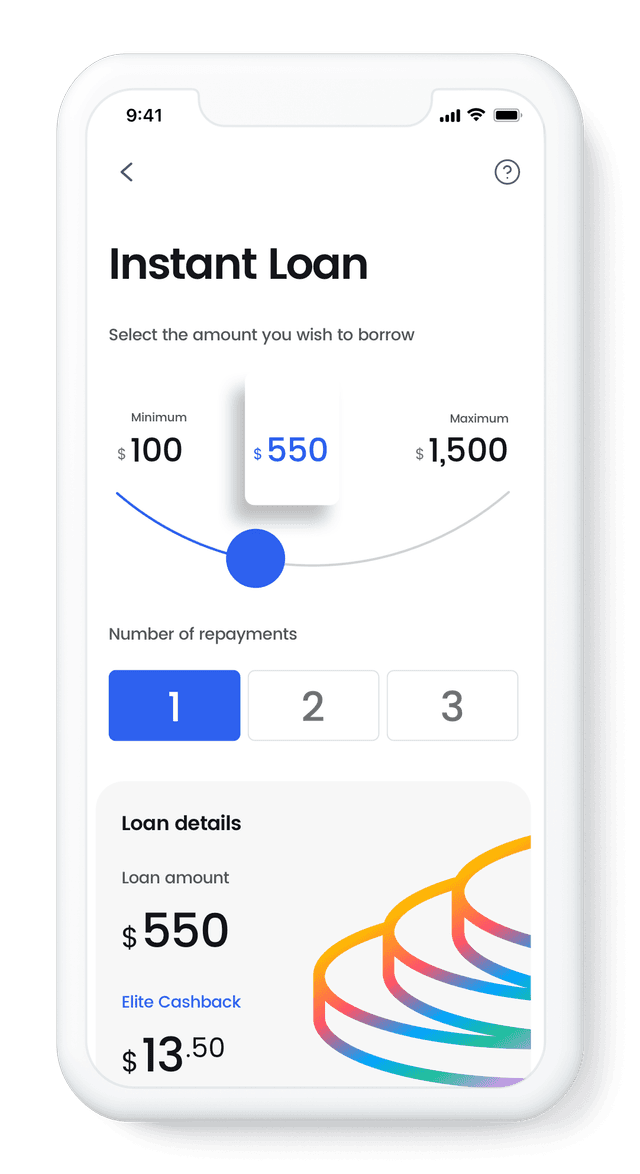Feeling unsure about how to make the most of your RRSP? Then you have this in common with many Canadians! What you might also have in common with nearly half of Canadians is living paycheque to paycheque, not leaving much left over to save.
However, investing your Registered Retirement Savings Plan (RRSP) wisely can put you on the path to a more secure future, so today we’re going to offer strategies to get you on the right track.
What Is a Registered Retirement Savings Plan (RRSP)?
A Registered Retirement Savings Plan (RRSP) is a government-registered account designed to help Canadians save for retirement. “Registered” means the account has special status in the eyes of the government, giving you tax advantages.
Here’s a quick overview of how these plans work:
Tax deduction for contributions: If you put money into an RRSP, you can deduct that amount from your taxable income for that year. So let’s say you earned $50,000 and contributed $5,000 to an RRSP. Then, you would only be taxed as if you earned $45,000. This tax deduction can greatly reduce your income tax at tax time.
Tax-deferred growth: Money inside your RRSP grows without being taxed along the way. Any interest, dividends, or capital gains your investments earn are not taxed while they remain in the RRSP.
Taxes on withdrawal (later, at retirement): You do eventually pay tax when you withdraw from an RRSP, but usually not until you retire. Most people have a lower income in retirement than during their working years, so the withdrawals are taxed at a lower rate. In other words, you delay paying tax until a time when it’ll hurt less.
Now that we’ve covered these basics, you’re already on your way to investing your RRSP wisely because you understand why RRSPs are so valuable for long-term savings.
Know Your RRSP Contribution Limits and Room
Before you get too excited about contributing, know there’s a cap on how much you can put into an RRSP each year.
Going over that limit can result in penalties, so let’s talk about RRSP contribution limits next:
Annual contribution limit: Each year, you can contribute up to 18% of your previous year’s earned income, to a maximum dollar amount. The government sets a ceiling that changes annually. For 2024, the maximum RRSP contribution was $31,560; in 2025, it rose to $32,490.
Contribution room (unused room): If you didn’t max out your RRSP in past years, the unused amount carries forward. This carried-forward space is often called your “RRSP contribution room” or “deduction room.” For instance, if your limit last year was $10,000 and you contributed only $6,000, the $4,000 you didn’t use gets added to your new room this year.
Over-contribution caution: The CRA does allow a small buffer of $2,000 in over-contributions lifetime (this is a one-time buffer, not per year) without immediate penalty. But anything beyond that is subject to a penalty tax of 1% per month on the excess.
Contribution deadline each year: You have until 60 days into the new year to make contributions that count for the previous tax year. For example, contributions made in January and February 2025 can be applied to your 2024 tax return.
Pension adjustments: If you have a workplace pension or Deferred Profit Sharing Plan, it will reduce your RRSP room. This is fair considering those pensions are another form of retirement saving with tax advantages. Your employer will report a pension adjustment that the CRA uses to shrink your RRSP contribution room accordingly.
Smart Strategies for Investing Your RRSP Wisely

Now that you know what an RRSP is, how it saves you money, and how much you can put in, let’s talk strategy:
Contribute Early and Consistently: Time is your best friend when it comes to retirement savings. Don’t wait until the RRSP deadline every year. If possible, start contributing at the beginning of the year or spread your contributions out monthly.
Reinvest Your Tax Refund: If you get a tax refund from your RRSP contributions, consider using it wisely. It might be tempting to spend that refund on a treat (and it’s okay to celebrate a little!), but remember, this money is a bonus from your savings habit. One option is to reinvest the refund either back into your RRSP or into a Tax-Free Savings Account (TFSA) or to pay down any high-interest debt.
Consider Deferring a Deduction (When It Makes Sense): You can contribute to your RRSP now but delay claiming the deduction until a future year. This is useful if you expect to be in a higher tax bracket later; your deduction will be worth more. This is an advanced strategy and requires discipline and knowledge of your future income, but it’s good to know it’s an option.
Maximize Employer Contributions (Group RRSPs): If your employer offers a Group RRSP or matching contributions (sometimes employers will match a portion of what you contribute to an RRSP or pension), take full advantage! That match is free money for your retirement. Contribute at least the minimum amount to receive the maximum match.
Spousal RRSP for Income Splitting: A spousal RRSP can help couples reduce taxes in retirement when one partner earns much more. The higher earner contributes to an RRSP in the spouse’s name and claims the deduction, while the funds belong to the spouse. Withdrawals later are taxed in the lower-income spouse’s hands, creating income splitting.
Choose the Right Investments: Keep in mind, an RRSP isn’t an investment itself; it’s an account that holds investments. To invest your RRSP wisely, choose options that align with your retirement timeline and level of risk comfort.
Avoid Early Withdrawals (Unless Absolutely Necessary): Taking money out of your RRSP before retirement is usually not wise—you’ll lose the tax deferral benefits and the contribution room permanently. If you withdraw, the amount will be added to your income and taxed; you won’t get that contribution room back in future years.
What’s Next?
We’ve covered a lot today, and this much information can be overwhelming, so please remember that you don’t have to navigate financial planning alone. If you’re ever unsure about investing in your RRSP wisely, reach out for advice.
Whether it’s a financial advisor, a trusted online resource, or even your bank’s retirement planning tools, getting guidance can help you make the best choices for your situation.
Life can be unpredictable. If unexpected expenses are making it hard to contribute to your RRSP, there are options to help. iCash is here to support Canadians in managing short-term financial needs.
With fast, flexible short-term loans available, iCash can help you handle surprise bills or urgent costs without unraveling your long-term goals.
Investing Your RRSP Wisely: Frequently Asked Questions
What is the main benefit of a Registered Retirement Savings Plan (RRSP)?
The main benefit of an RRSP is that it allows you to save for retirement while getting tax advantages. Contributions are tax-deductible (giving you a tax deduction that can reduce your income tax), and the investments grow tax-free while inside the RRSP.
What is my RRSP contribution limit, and how do I find my contribution room?
Your RRSP contribution limit for the year is up to 18% of last year’s earned income, capped at a maximum set by the government (for example, $32,490 for 2025). On top of the new yearly room, you also have any unused contribution room carried forward from previous years.
To find your exact numbers, check your Notice of Assessment from your last tax return. You can also log into your CRA “My Account” online to see your RRSP and TFSA room.
Over-contributing beyond the $2,000 grace amount triggers a 1% per month penalty on the excess, so always stay within your allowed room.
At what age do I have to stop contributing to an RRSP?
You can continue contributing to your RRSP up until December 31 of the year you turn 71. In the year you turn 71, you can make your final contribution (and if you have a younger spouse, you could still contribute to a spousal RRSP in their name up until the year they turn 71).
By the end of that year, you’ll need to convert your RRSP into a Registered Retirement Income Fund (RRIF) or an annuity, or otherwise withdraw the funds.
Is it better to invest in an RRSP or a TFSA?
Both RRSPs and TFSAs are great options, but which one is better depends on your specific situation and goals.
An RRSP is usually best for long-term retirement saving, especially if you’re in a higher tax bracket now. You get an upfront tax deduction (saving you money today) and you’ll pay tax on withdrawals later, ideally at a lower rate in retirement.
A TFSA (Tax-Free Savings Account) is often better suited for shorter-term goals or if you’re currently in a low tax bracket. You don’t get a deduction for TFSA contributions, but any growth and withdrawals are completely tax-free.
If you might need the money before retirement (for a house, emergencies, etc.), a TFSA offers more flexibility, as you can withdraw funds at any time with no tax, and you regain that contribution room the following year.
Also, as we explain in this article, TFSA withdrawals don’t count as income, so they won’t affect income-tested benefits (while RRSP withdrawals do).
In an ideal world, you contribute to both: use RRSPs to the extent they give you significant tax savings, and use TFSAs for additional savings and shorter-term needs.
What should I do with my RRSP savings when I retire?
When you retire (or by age 71 at the latest), you have to convert your RRSP into a form of income. The most common option is to roll it into a Registered Retirement Income Fund (RRIF).
Another option is purchasing an annuity from an insurance company, which gives you a guaranteed income for life (or a set number of years) in exchange for your RRSP funds.
Some retirees use a combination (for example, buy an annuity with part of the RRSP for guaranteed income and keep the rest in a RRIF for flexibility).
The right choice depends on your income needs, health, and preferences.
We discuss saving for retirement in more detail in this article.
What if I need money before retirement? Should I ever borrow from my RRSP?
It’s generally best to leave your RRSP alone until retirement because of the tax hit and lost room if you withdraw.
That said, the Canadian government has two programs that let you borrow from yourself without tax consequences, but only under specific circumstances:
The Home Buyers’ Plan (HBP): This program is designed for first-time buyers (or those who haven’t owned a home in years) to withdraw up to $35,000 from an RRSP for a down payment. You repay it over 15 years, or the withdrawn amount is added to your income and taxed.
The Lifelong Learning Plan (LLP): With the LLP, you’re permitted to make withdrawals of up to $10,000 a year (to a $20,000 maximum) for full-time education or training for yourself or a spouse. You’ll need to repay it over 10 years.
Outside of these programs, RRSP withdrawals are taxable and reduce your retirement savings.










